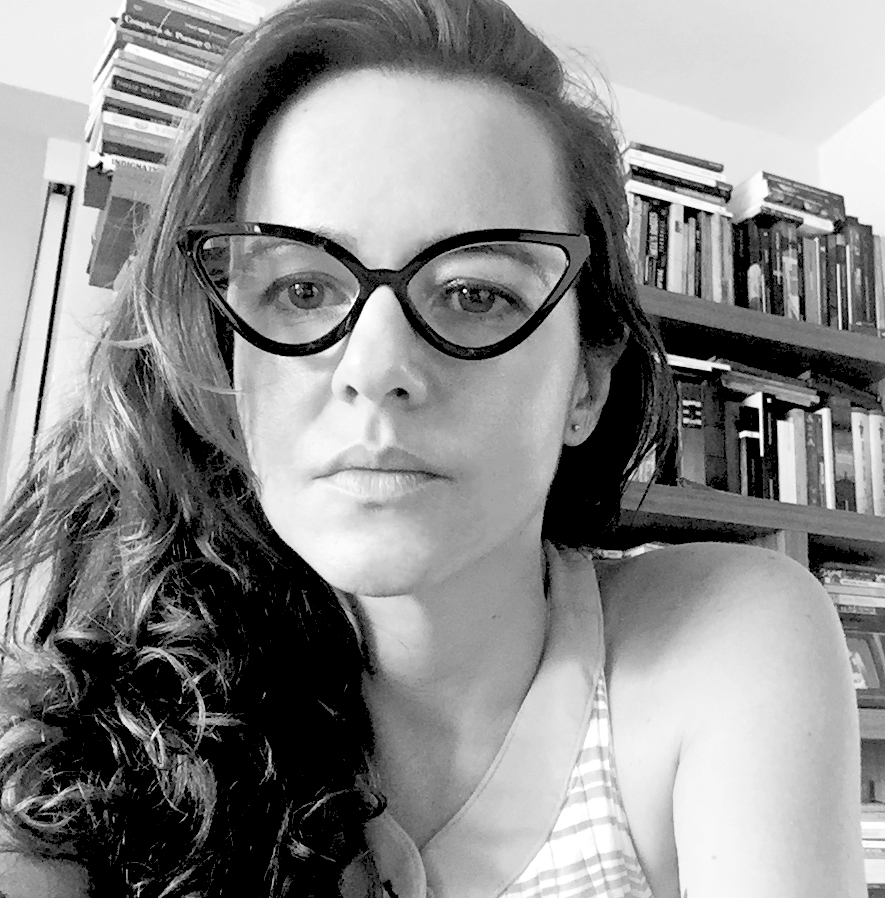Biography

[Born in Recife – PE, 1975]
“Juliana Notari has created a set of artworks that face her singularities, passing through biography, confession, catharsis and relational practices. By using several different focuses and modes of operation, traumas, desires, fantasies, and fears are re-inserted in performances, videos, installations, and objects, establishing relationships between subjectivities (specially through the links between artist-work-public), which, in turn, consist of the central axis in the artist’s work. And thus Notari joins a small group of artists whose work refers less to art than to human nature.”
Clarissa Diniz
Artist and researcher in the field of arts, she holds a doctorate and master’s degree in Visual Arts from the PPGARTES/UERJ, works with the most diverse languages (installations, performances, videos, photographs, drawings and objects) with a multidisciplinary approach.
Her visual research has created a body of work that face their singularities, transiting between biography, confessionals, the cathartic and relational practices. With varying emphasis and modus operandi, traumas, desires, fantasies and fears are re-inserted in her artwork, instituting inter-subjective relations that, in turn, make up the central axis of the artist’s body of work.
Notari has been part of national and international exhibitions, awarded and in artist-in-residence programs, and her artwork is in both public and private collections. Amongst those, a few select are: artist finalist of the 7th edition of the Prêmio Indústria Nacional Marcantonio Vilaça – 2019 (Brazil), PIPA Prize 2019 and 2018 nominee (Brazil), Prêmio do Salão Arte Pará – 2014 (Brazil), Prêmio Funarte – Mulheres nas Artes Visuais – 2013 (Brazil) and Prêmio Bolsa de pesquisa no Salão de Arte Contemporânea de Pernambuco (Brazil) – 2004.
Her main solo shows include: “Amuamas”– Museu de Arte Moderna Aloisio Magalhães – MAMAM (Recife, PE, Brazil – 2018); “Desterro: enquanto eles cresciam”– Museu da Cidade do Recife (PE, Brazil – 2016); “SORTERRO Cap.5” – Museu de Arte Moderna Aloisio Magalhães – MAMAM (Recife, PE, Brazil – 2014); “Rir pour Moi” – gallery of the École Supérieure d’Art d’Aix-en-Provence (France – 2009); “REDENTORNO”, Galeria Vicente do Rêgo Monteiro, Fundação Joaquim Nabuco – Fundaj (Recife, PE, Brazil – 2008); “Diário de Bandeja” – Galeria Amparo 60 (Recife, PE, Brazil – 2008); “Symbebekos” – Galeria Fayga Ostrower, Funarte (Brasília, DF, Brazil – 2004)
Selected group shows are: Diva, sculpture in permanent exhibition at Usina de Arte (Água Preta, PE, 2020); ‘À Nordeste’, SESC 24 de Maio (São Paulo, SP, 2019); ‘Exhibition of the 7th Marcantonio Vilaça Prize’, MAB-FAAP (São Paulo, SP, 2019); 37th Pará Art Salon [Invited Artist] – UFPA Museum (Belém, PA, 2018); “Bienal Del Sur: Pueblos en Resistencia” – Museo de Bellas Artes (Caracas, Venezuela – 2015); “Dupla-Boca / Double-Mouth” – gallery of the Bergen Academy of Art and Design (Bergen, Norway – 2013); “Transperformance 2 – Inventário dos Gestos” – Oi Futuro Flamengo ( Rio de Janeiro, RJ, Brazil – 2012); “Metrô de superfície” – Paço das Artes (São Paulo, SP, Brazil – 2012); “Festival Performance Arte Brasil” – Museu de Arte Moderna do Rio de Janeiro – MAM (Rio de Janeiro, RJ, Brazil – 2011); “Tripé/Escrita” – SESC Pompéia (São Paulo, SP, Brazil – 2010); “Rumos Itaú Cultural de Artes Visuais” (São Paulo, SP; Rio de Janeiro, RJ; and Salvador, BA, Brazil – 2009); “Territoires Transitoires” – Palais de la Porte Dorée (Paris, France – 2005); “O Corpo na Arte Contemporânea Brasileira” – Itaú Cultural (São Paulo, SP, Brazil – 2005).
Examples of private and institutional collections that includes Notari’s artwork are the Museu de Arte do Rio – MAR (Rio de Janeiro, Brazil); Museu de Arte Moderna Aloisio Magalhães – MAMAM (Recife, PE, Brazil); Coleção do Banco do Nordeste – CCBNB (Fortaleza, CE, Brazil); Fundação Rômulo Maiorana (Belém, PA, Brazil); Museu da Universidade Federal do Pará (Belém, PA, Brazil); Cultural Foundation GUEES (Los Angeles, USA); Casa Niemeyer (Brasília, DF, Brazil) and Casa de Cultura da América Latina – CAL, Universidade de Brasília (Brasília, DF, Brazil).


